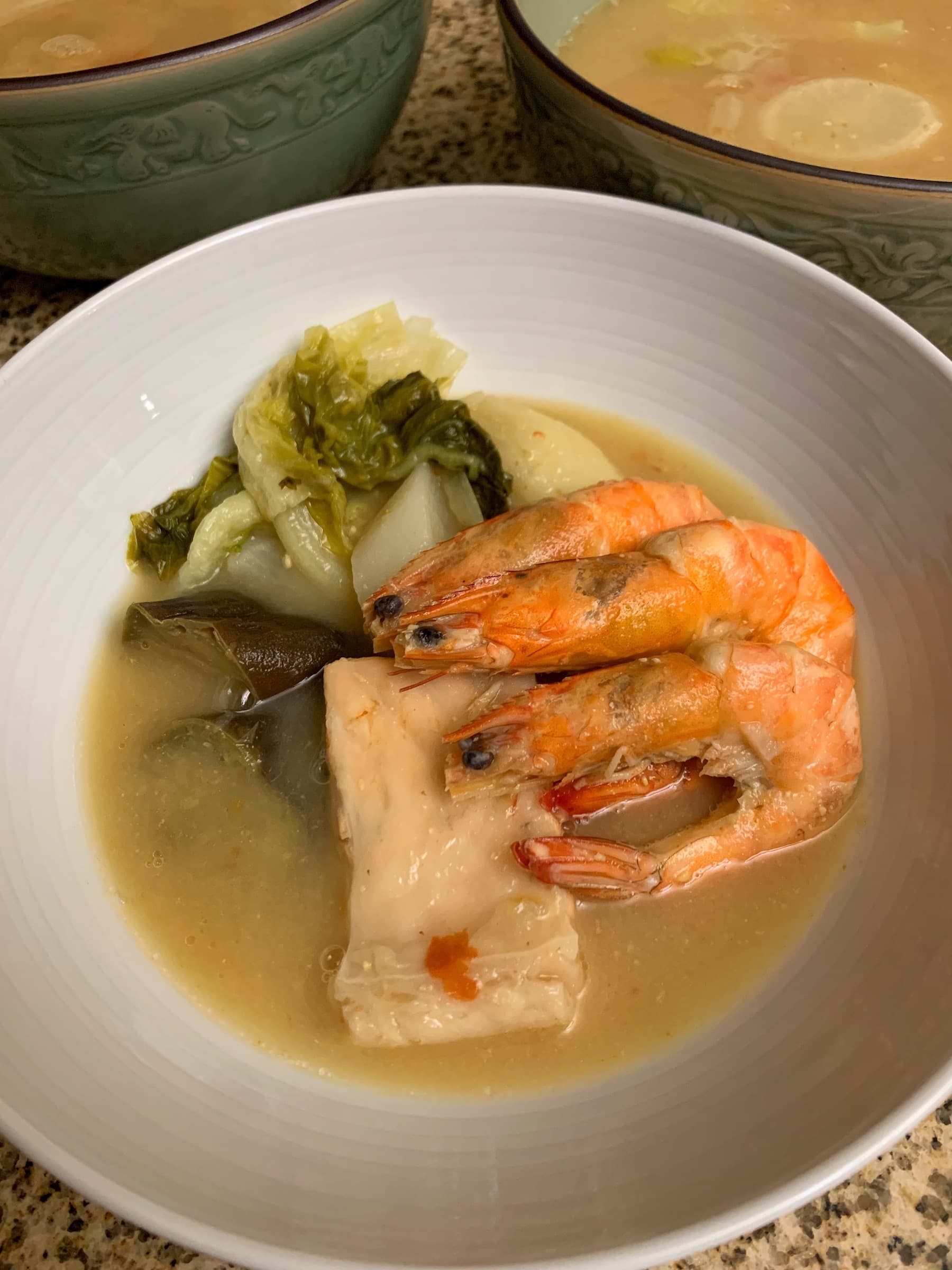
Everyday Comfort Food for All Occasions.
While the world may know of adobo or lumpiang shanghai as the national dishes of the Philippines, there is actually a more locally-loved dish – sinigang. Learn the sinigang history and what makes the sour soup so loved.
All About Sinigang & Sinigang History
The Name, Sinigang
Sinigang comes from the verb “sigang” meaning “to stew” – therefore, sinigang means “stewed”.
The stew, or soup really as it’s a lighter broth, simmers a protein in a sour broth with vegetables. The sourness comes from sour fruits, typically tamarind and never vinegar.
While this is a soup, it is not like a western soup course as an appetizer. Rather, it is considered a main dish as it is cooked in abundance for a family or gathering.
And much like other soups cooked in hot and humid Southeast Asia, sinigang’s sourness and heat help refresh and cool one down during even the hottest months of the year.
The Ingredients
The dish starts with a simmering of tomatoes and onions followed by the addition of a star protein – meat would include pork, beef, or chicken and seafood would feature shrimps and/or a local white fish or even salmon bellies.
The acidity is then added typically tamarind, but many regional recipes might opt to add kamias, green mangoes, calamansi, santon, or guava.
To finish, vegetables complete the dish such as okra, taro, radish, kangkong, sitaw, eggplant, mustard greens, bok choy, and local long green chili peppers.
Some recipes round out the broth with miso, and many love to eat the meal with fish sauce as a condiment.
Sinigang History and Origins
Sinigang is one of the country’s oldest dishes as it has indigenous origins and existed in the Philippines long before any colonizers set foot in the country.
There are no written records or detailed origins, but one can assume it was truly created in the country or from nearby Southeast Asian neighbors as sour soups also prevail in Malaysia, Indonesia, Vietnam, and Thailand.
The Unofficial National Dish
While the world and many Filipinos themselves may think of adobo, lumpiang shanghai, or even lechon or crispy pata as national dishes, sinigang can also rightly be considered a national dish as it is truly a locally loved meal.
Sinigang is for everyday meals or a splurge for special occasions featuring premium protein. It can be adjusted for preferences, budgets, and seasonality when it comes to the addition of protein and vegetables. Mostly, it is the ultimate comfort as it provides warmth from the heat and brightens from the sour.
Sign up for my newsletter on the sidebar for blog updates and my travel insider tips! And, check out my vlogs on YouTube!


